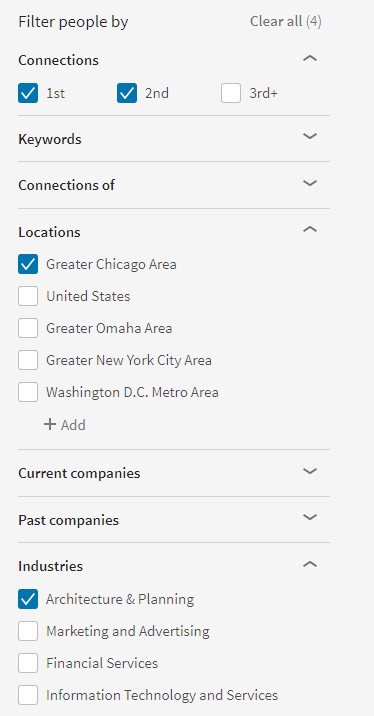So you want to pursue a degree in architecture.
Good for you. Architecture is a respectable profession that carries with it a supremely important responsibility to the rest of humanity.
Architects are the ones who bridge the gap (no pun intended) between dreams of what is possible and reality. Architects are the ones who literally shape the world around us, for better or for worse.
That’s what makes your decision to study architecture at all an important one.
But the next important decision to make is where on earth you should study? While everyone has an opinion on what factors you should consider when looking at architecture schools, you might find that the following list of five suggestions for choosing a college at which to study architecture takes a slightly different approach.
What should you look for when searching for an architecture program?
1. A program that doesn’t hide its difficulty
Architecture is hard. Design is hard. Creativity is hard.
While it may seem hopeful and promising to attend a program that promises high graduation rates and inclusive grading, that doesn’t necessarily work in your favor. While architecture does not necessarily have to be the most competitive of fields between classmates, you will find yourself competing every day – with yourself.
Look for a program that challenges you to look yourself in the mirror every now and then and remind yourself why you want to be an architect. The best programs in the nation are not tough just for the sake of being tough. They’re tough because architecture is tough, and if you can’t persevere through the difficulties of criticism and fatigue, then the practice may not be right for you.
Those who are forced to realize this early – often in the first few months of their studies – may emerge with initial bitterness, but often come to appreciate that the end result came quickly.
2. A program that encourages multidisciplinary learning
Some programs (and faculty) can become so focused on delivering skills and theory related to your specific field that they develop a sort of prejudice against other disciplines or areas of study.

While depth and precision are important in an industry such as ours, there comes a point at which depth is not the most valuable to you as a student.
This is by no means specific to architecture. Every area of academic study experiences a phenomenon called diminishing marginal returns. That’s a fancy economic term meaning that the further you go in a single subject, the less value you obtain.
You might learn 100 new and highly valuable things during your freshman year of college, and then build on those your sophomore year to learn 50 new things, to 25 new things in your junior year, and 15 in your senior year. You end up honing your craft, certainly. But you also end up digging yourself into a very narrow hole.
Consider another example. Let’s say you grew up as an athletic prodigy (it’s okay to dream for a minute), and baseball was your sport of choice. You grew up training for your future playing Catcher on a Major League Baseball team. You practiced day in and day out for fifteen years until you got a chance to perform in front of major league scouts. You displayed your talents perfectly, but unfortunately, the teams looking at your group of prospects all had veteran catchers on their teams already and didn’t need to add a risky addition to the team. Instead, they choose the player next to you, who cannot catch or throw as well as you, but knows how to play infield and outfield as well.
The point: diversity of skills and experience is important for success in any career.
Even if you successfully land yourself in a career in architecture, you will undoubtedly be faced with challenges you hadn’t been prepared for in school. Your success depends on your adaptability and your comfort level in handling items that don’t come with written instructions.
Therefore, it’s extremely important to choose an institution and a program that prizes diverse experiences for its students. These could be obtaining a minor (or second major) in another discipline like business or communication. It could be pursuing extracurricular activities like clubs and competitions. Some programs even encourage students to test out the world of entrepreneurship, applying industry knowledge in a startup setting rather than a traditional setting.
It’s hard to say whether the faculty and institutions who avoid multidisciplinary experiences are purists, traditionalists, or just ignorant of the modern economy. In most cases, the desire is undoubtedly innocent. However, the consequences for the students who don’t receive a robust experience are often all too real when they’re hit with the reality of life outside of academia.
3. A program with a strong community of alumni
The keyword in this point is strong – not necessarily large.
There are plenty of institutions and architecture programs with thousands, if not tens of thousands of alumni. But as a student, the sheer number of alumni isn’t necessarily of tremendous value to you. (In fact, as stated in #1, it may even be a warning sign of the program’s difficulty.)
What is of value to you is the number of engaged alumni.
No, we’re not talking about diamond rings. We’re talking about professionals who regularly engage with their alma mater, who stay in touch with old professors, who lecture in classes, who offer internships that favor students form their home institution.
These are the people who will be of most value to you as a student.
It takes one person of influence in your life to help you make moves that will determine the rest of your career (no pressure). It doesn’t take 10,000. And it definitely does not take 10,000 disengaged alumni.
Will you be able to learn from a program website how strong an alumni community is? Probably not. That’s why in-person visits are important.
But even beyond an in-person visit, it’s easier than ever to interact with alumni of a certain school.
Here’s a simple trick you can use if you want to learn about the alumni of an architecture program.
1. Sign up for a free account on LinkedIn.
(It may seem like it’s for adults, but guess what – if you don’t consider yourself an adult yet, it’s time to start. Setting up a free LinkedIn account early in your career will help you position yourself for important networking opportunities later on in life – and maybe even before you graduate.)

2. Navigate to the search bar at the top of the screen.

3. Click, and click on “Search for People.”

4. Browse the sidebar on the right side of the screen to filter by specific categories.
Here you will want to enter some pretty specific information about someone from this institution you might like to talk to. Here’s an example, assuming you’d like to speak with someone from Judson University in Elgin, IL.
School: Judson University
Industry: Architecture and Planning
Locations: Greater Chicago Area
Keywords: Architect
Connections: 1st and 2nd

Once the results are filtered down to this level, you can see all people on LinkedIn who have attended that specific school, are still in the architecture industry, and have the word “architect” in their title.
5. Next, unless you start a free trial of LinkedIn Premium, you’ll want to send a connection invitation to 10-15 of these folks.
Before doing so, I would update your position title to say “Student and Aspiring Architect” or something to let these people know that you’re not trying to spam them.

6. Include in your invitation a short little message.

You can copy and paste the following if you’d like:
Hi John,
I saw you graduated from Judson University. I am a senior in high school and am considering studying architecture at Judson next Fall.
I was hoping I could get your opinion on two quick questions.
1. How would you describe the value you received from your experience at Judson in one sentence?
2. How engaged have you been with the program as an alum?
Thanks for your time, and I hope to connect.
Ethan
Not all of them will accept your request (it’s not you – some people just don’t log onto LinkedIn very often), but a few will. When they do accept you, you will be able to navigate to their profile and follow up on your message if they haven’t replied yet.
This may seem awkward, but you would be surprised at how open many people will be to giving you advice as a student. People tend to have very strong feelings about their alma mater, so be prepared to meet some new people, and maybe even impress them and make some good connections for the future.
4. A program with a small to medium enrollment
Bigger is not always better when it comes to a college education. There are certainly advantages when it comes to the networks and resources of larger institutions, but some disciplines benefit much more strongly from relationships forged between faculty, alumni, and students, and architecture is very often one of them.
It may be a professor who helps you discover talent you didn’t know you had (or guides you away from a talent you thought you had).
It may be the program chair or dean who takes a liking to you and offers to connect you someone at his or her old firm.
It might simply be the ability to have personal and raw conversations with faculty that will have a lifelong impact on your career.
No matter the outcome for you, participating in a program that’s small enough to develop meaningful relationships has the potential to provide more value than the “prestige” of programs at some larger institutions.
5. A program geographically near where you would like to live
While it’s not impossible to uproot yourself and choose to live anywhere in the world, a grand majority of graduates end up finding jobs and pursuing careers within a pretty small radius of their college.

If you want to live and practice architecture in L.A., you ought to consider more schools in that area of the country. If you’ve always dreamed of practicing restorative architecture, you might explore an institution in one of your favorite historic cities: Paris, Rome, or Munich, for example.
You may not have the slightest clue where you want to live after you graduate. That’s fine. Many people can guess, however, by how eager they feel to leave their upbringing or proximity to their family.
The decision is not irreversible; however, know that the location of the school will be a strong factor in where you find the most compelling options to start your career and settle down.
Is that it?
No, it’s not. The decision of where to attend architecture school is, of course, different for every person and varies drastically according to the priorities and goals you have in your life.
At the end of the day, the decision comes down to a mixture of careful thought, sound reasoning, and that indescribable gut feeling of belonging that comes with the “right” place to study.
If you have already been to architecture school, where did you attend and why? Let us know in the comments.
--
Ethan Adams
 BIMsmith is a free cloud platform for architects, designers, and building professionals to research, select, and download building product data. Search, discover, compare, and download free Revit families on BIMsmith Market, or build complete, data-rich Revit wall, floor, ceiling, and roof systems faster with BIMsmith Forge.
BIMsmith is a free cloud platform for architects, designers, and building professionals to research, select, and download building product data. Search, discover, compare, and download free Revit families on BIMsmith Market, or build complete, data-rich Revit wall, floor, ceiling, and roof systems faster with BIMsmith Forge.














